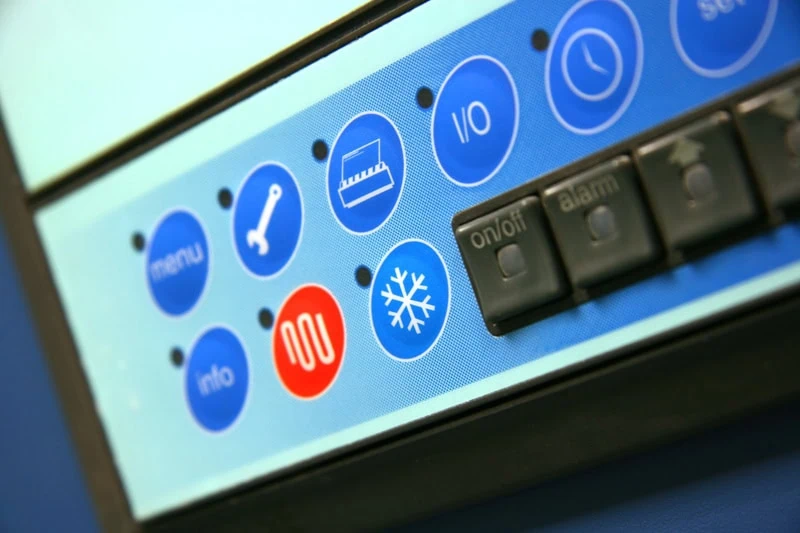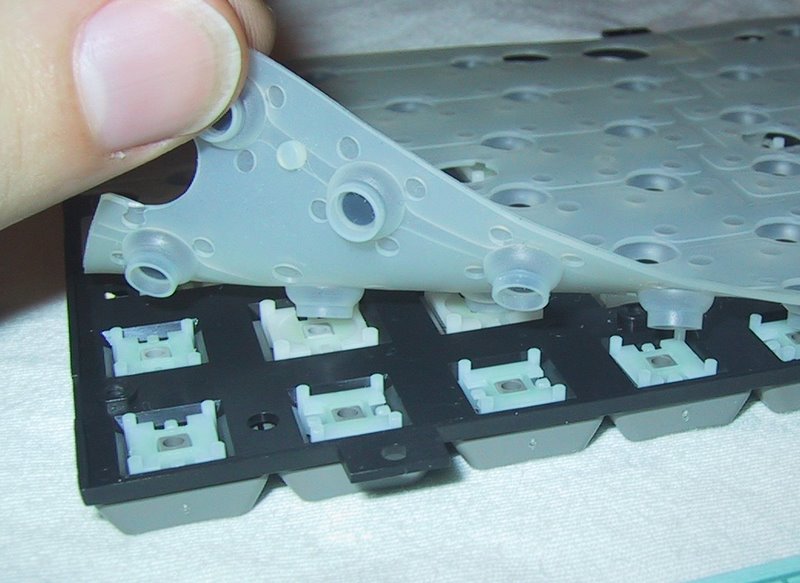Discover the Role of Membrane Switches in Medical Gadgets and Equipment
The Ultimate Source on Membrane Switches: Design, Functionality, and Applications
Membrane switches work as a fascinating intersection of style and functionality, playing a pivotal role in modern user interfaces throughout numerous fields. This source unboxes the crucial components that add to their effectiveness, consisting of visuals overlays and circuit traces, while also elucidating the mechanisms behind their stress activation. As we explore the diverse applications of membrane switches, it becomes noticeable that their flexibility and sturdiness are vital in atmospheres varying from medical care to customer electronics. The nuances of their style and operational principles might reveal also deeper insights worth considering.

Recognizing Membrane Buttons
Membrane layer buttons are a type of interface modern technology commonly used in different digital gadgets, characterized by their slim, flexible layout and functionality. These buttons include numerous layers that include graphic overlays, adhesive layers, and circuitry, making it possible for a effective and compact interface for customers. They can be found in home appliances, medical devices, and commercial control board, supplying a trustworthy approach for customer communication.
One of the main advantages of membrane layer buttons is their ability to withstand pollutants such as dirt and wetness, making them suitable for atmospheres where toughness is important. Their low-profile style enables smooth combination right into various applications, while the personalized graphic overlays boost customer experience by giving clear visual feedback. Furthermore, membrane layer buttons can suit a variety of technologies, such as tactile comments and backlighting, additional improving their functionality.
The production procedure for membrane layer changes typically involves display die-cutting, lamination, and printing techniques, ensuring accuracy and consistency in production. On the whole, membrane layer switches over represent a versatile and effective service for modern digital devices, combining capability with aesthetic appeal in customer interface style.
Key Components and Style Aspects
A variety of crucial components and design components collaborated to produce an effective membrane layer switch. At the core, the graphic overlay serves both visual and practical functions, providing an user-friendly user interface while securing internal components from environmental aspects. The option of products, usually polyester or polycarbonate, affects durability and tactile responses.
Underneath the overlay, the adhesive layer makes sure the button adheres safely to the substrate, which can be glass, steel, or plastic. The spacer layer is essential, as it maintains the necessary space between the overlay and the circuit layers, allowing for effective actuation. Membrane Switches. Circuit traces, normally made from conductive ink or adhesive, are published on a flexible substratum, enabling electrical signals to be sent when stress is applied
Layout factors to consider also include the setup of responsive domes or embossing that offer physical comments to the customer, boosting the total experience. Furthermore, the format and spacing of the buttons must be optimized for simplicity of usage, guaranteeing that individuals can navigate the interface with ease. On the whole, these components and design aspects function synergistically to develop a reputable, practical membrane button customized to certain applications.
Capability and Procedure Device
At the heart of efficient functionality for membrane layer switches over lies their operational mechanism, which assists in individual communication via a straightforward yet reliable layout. These switches operate on the principle of stress activation, where a customer uses force to a marked location of the button (Membrane Switches). This action presses the layers of the button, finishing an electrical circuit that sends a signal to the connected device
The building normally consists of a leading visuals layer, a glue spacer layer, and a lower circuit layer, which collectively develop a robust interface. When stress is used, the top layer falls down versus the bottom circuit layer, allowing conductive traces to attach. This style not just allows clear tactile feedback yet additionally makes certain resilience and reliability, as the buttons are frequently immune to dust and dampness.
Additionally, the versatility of membrane changes enables assimilation with various technologies, consisting of LED indicators and microcontrollers, boosting their performance. By providing a streamlined interface that decreases mechanical wear, membrane changes remain a popular option in applications varying from consumer electronic devices to commercial tools, making sure optimal efficiency and individual contentment across diverse environments.
Kinds Of Membrane Layer Switches

One more substantial group is illuminated membrane buttons, which incorporate backlighting to improve exposure in low-light problems. These buttons are usually made use of in control panels and dashboards where clear visibility is vital.
Moreover, there are customized membrane layer switches over made to fulfill details dimensional, graphical, and practical demands. These personalizations can include distinct shapes, colors, and layouts, allowing for seamless assimilation right into various gadgets.

Applications Throughout Numerous Industries
Exactly how do membrane buttons improve performance across varied markets? These functional parts are indispensable to many applications, providing structured individual interfaces and robust performance. In the clinical industry, membrane layer buttons play a crucial role in tools such as analysis devices and individual monitoring systems, where integrity and simplicity of cleaning are extremely important. Their capacity to stand up to harsh settings makes them suitable for lab instruments and medical devices.
In the auto industry, membrane layer buttons are generally used in control panels and control board, offering instinctive controls that improve vehicle driver safety and benefit. The customer electronic devices market additionally takes advantage of their lightweight and adjustable attributes, making it possible for sleek styles for smart devices and home appliances.
Furthermore, membrane layer buttons locate applications in commercial automation, where they contribute to effective equipment procedure and surveillance systems. Their resistance to dust and wetness makes certain capability in demanding conditions (Membrane Switches). In addition, the food and beverage sector employs membrane switches for devices control, where hygiene and sturdiness are crucial
Verdict
To conclude, membrane layer switches represent an important development in customer interface modern technology, identified by their one-of-a-kind layout and performance. Their crucial parts, consisting of visuals overlays and circuit traces, add to their operational efficiency through pressure activation. The versatility of membrane layer switches facilitates their application throughout varied markets, from medical devices to consumer electronic devices. This comprehensive understanding enhances the relevance of membrane layer switches in boosting item use and resilience in contemporary technological settings.
Membrane layer switches linked here offer as an intriguing junction he said of design and capability, playing an essential role in modern-day individual interfaces across numerous sectors.Membrane layer switches are a kind of individual interface modern technology commonly made use of in different electronic tools, characterized by their slim, flexible style and performance.At the heart of reliable performance for membrane layer switches lies their operational system, which facilitates individual communication through a simple yet effective layout. These switches operate on the concept of pressure activation, where a customer uses force to an assigned location of the switch.In verdict, membrane changes stand for an essential development in customer interface technology, characterized by their special design and capability.